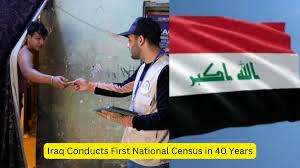UP’s Rural Women Drive ₹27,000 Crore in Financial Transactions
Introduction to the Initiative
The Uttar Pradesh government’s recent initiative to empower rural women has yielded remarkable results, with over ₹27,000 crore in financial transactions facilitated by women self-help groups (SHGs). This initiative, part of a broader strategy to promote women’s entrepreneurship and financial inclusion, aims to transform the economic landscape of rural areas in the state. The program is not just about financial transactions; it represents a significant step toward gender equality and economic independence for women in rural India.
Overview of Women Self-Help Groups
Self-help groups have become a cornerstone of the Indian government’s strategy for poverty alleviation and women’s empowerment. In Uttar Pradesh, these groups have seen an exponential rise in membership and financial activities. Women from various backgrounds are coming together to pool resources, share knowledge, and support each other in their entrepreneurial endeavors. The support from the government, in terms of training and financial literacy programs, has further enhanced their capacity to engage in profitable ventures.
Economic Impact and Growth
The astounding ₹27,000 crore in transactions underscores the substantial economic impact these women are having on their communities. By engaging in micro-enterprises and collective farming, they are not only improving their own financial status but also contributing to the local economy. This initiative is paving the way for sustainable development, creating jobs, and reducing poverty levels in rural areas. The empowerment of women in financial matters is crucial for fostering a robust and resilient economy.
Challenges and Solutions
Despite these successes, rural women still face significant challenges, including limited access to markets and ongoing societal barriers. The government and various NGOs are actively working to address these issues by providing better market access, legal support, and ongoing training. These measures are crucial for sustaining the momentum of this initiative and ensuring that rural women can continue to thrive economically.
Future Prospects
The success of this initiative sets a precedent for other states to follow. With continued support and investment in women’s self-help groups, Uttar Pradesh can serve as a model for inclusive economic growth in India. The government aims to further enhance the capacity of these groups, focusing on skill development and market linkages, ensuring that the financial empowerment of women becomes a catalyst for overall community development.

Why This News is Important
Promoting Financial Inclusion
The initiative highlights the importance of financial inclusion, particularly for women in rural areas. By facilitating access to financial services and empowering women economically, it addresses one of the critical barriers to poverty alleviation.
Economic Development
With women driving substantial financial transactions, the initiative contributes significantly to the overall economic development of rural regions. This empowers women and stimulates local economies, creating a multiplier effect that benefits entire communities.
Gender Equality
The program is a step toward achieving gender equality by promoting women’s participation in the economic sphere. This fosters a more equitable society and helps challenge traditional gender roles that often confine women to domestic responsibilities.
Empowerment Through Education
By providing training and financial literacy programs, the initiative empowers women with the knowledge and skills needed to manage finances effectively. This education is crucial for their personal and professional growth.
Model for Other States
The success in Uttar Pradesh can serve as a blueprint for similar initiatives across India, promoting rural women’s empowerment and economic participation nationwide.
Historical Context
Background of Self-Help Groups
Self-help groups in India began in the early 1980s as a grassroots movement aimed at promoting savings and providing financial services to the underprivileged, particularly women. Over the decades, these groups have evolved into a vital component of India’s socio-economic development strategy.
Government Support
The Indian government has recognized the potential of self-help groups as a means of poverty alleviation and women’s empowerment. Various schemes, including the National Rural Livelihoods Mission (NRLM), have been implemented to support the formation and functioning of these groups.
Progress in Uttar Pradesh
Uttar Pradesh has made significant strides in promoting women’s self-help groups over the past few years. The government’s commitment to empowering women through financial inclusion has led to substantial growth in the number and efficacy of these groups, significantly impacting the state’s rural economy.
Key Takeaways from “UP’s Rural Women Drive ₹27,000 Crore in Financial Transactions”
| Serial Number | Key Takeaway |
|---|---|
| 1 | Over ₹27,000 crore in financial transactions driven by women self-help groups in UP. |
| 2 | The initiative promotes financial inclusion and entrepreneurship among rural women. |
| 3 | Self-help groups have significantly contributed to poverty alleviation and economic growth. |
| 4 | Continued government support is crucial for sustaining and expanding these initiatives. |
| 5 | The success in UP can serve as a model for other states in empowering rural women. |
Important FAQs for Students from this News
1. What are self-help groups (SHGs)?
Self-help groups (SHGs) are small, informal groups of people, typically women, who come together to save money and provide microfinance for each other. They focus on collective action and empowerment.
2. How much financial transaction has been driven by rural women in Uttar Pradesh?
Rural women in Uttar Pradesh have driven over ₹27,000 crore in financial transactions through various self-help groups.
3. What is the significance of women’s empowerment in rural India?
Women’s empowerment in rural India is crucial for economic development, promoting gender equality, and improving the standard of living for families and communities.
4. How does the government support women self-help groups?
The government provides financial assistance, training programs, and access to credit facilities to empower women self-help groups and enhance their skills.
5. Can other states replicate the success seen in Uttar Pradesh?
Yes, the success of Uttar Pradesh’s initiative can serve as a model for other states, promoting similar programs to empower rural women and drive economic growth.
Some Important Current Affairs Links

















